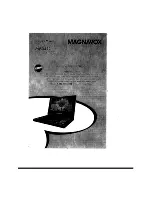
9
Figure 13 - 12 Volt DC, 10 Amp Receptacle
2.3.6 120/240 VAC, 50 AMP RECEPTACLE
Use a NEMA 14-50 plug with this receptacle. Connect a 4-wire cord set
rated for 250 Volts AC at 50 Amps to the plug (Figure 14).
Figure 14 - 120/240 VAC, 50 Amp Receptacle
50 A
Use this receptacle to operate 120/240 Volt AC, 60 Hz electrical loads
requiring up to 12,000 watts (12.0 kW) of power. This receptacle is
protected by a 50 Amp 2-pole circuit breaker.
2.4 HOW TO USE THE GENERATOR
See the "To Start the Engine" section for how to safely start and stop
the generator and how to connect and disconnect loads. If there are any
problems operating the generator, please call the generator helpline at
1-888-436-3722.
Never operate in an enclosed area or indoors!
NEVER use in the home, in a vehicle, or in partly
enclosed areas such as garages, EVEN IF doors
and windows are open! ONLY use outdoors and
far from open windows, doors, vents, and in an
area that will not accumulate deadly exhaust.
The engine exhaust fumes contain carbon
monoxide, which can you cannot see or smell.
This poisonous gas, if breathed in sufficient
concentrations, can cause unconsciousness or
even death.
Adequate, unobstructed flow of cooling and
ventilating air is critical to correct generator
operation. Do not alter the installation or permit
even partial blockage of ventilation provisions,
as this can seriously affect safe operation of
the generator. The generator MUST be operated
outdoors.
This exhaust system must be properly
maintained. Do nothing that might render the
exhaust system unsafe or in noncompliance with
any local codes and/or standards.
Always use a battery operated carbon monoxide
alarm indoors, installed according to the
manufacturers instructions.
2.4.1 GROUNDING THE GENERATOR WHEN USED AS A
PORTABLE
This generator has an equipment ground that connects the generator
frame components to the ground terminals on the AC output receptacles
(see NEC 250.34 (A) for explanation). This allows the generator to be used
as a portable without grounding the frame of the generator as specified
in NEC 250.34.
Special Requirements
There may be Federal or State Occupational Safety and Health
Administration (OSHA) regulations, local codes, or ordinances that apply
to the intended use of the generator.
Please consult a qualified electrician, electrical inspector, or the local
agency having jurisdiction:
• In some areas, generators are required to be registered with local
utility companies.
• If the generator is used at a construction site, there may be
additional regulations which must be observed.
2.4.2 CONNECTING TO A BUILDING’S ELECTRICAL
SYSTEM
When connecting directly to a building's electrical system, it is
recommended that a manual transfer switch is used. Connections for
a portable generator to a building's electrical system must be made by
a qualified electrician and in strict compliance with all national and local
electrical codes and laws.
Operation












































